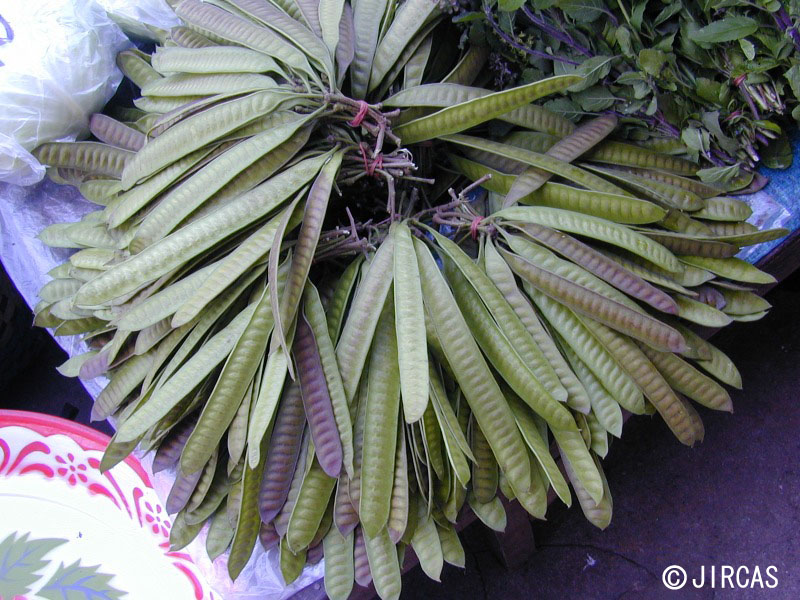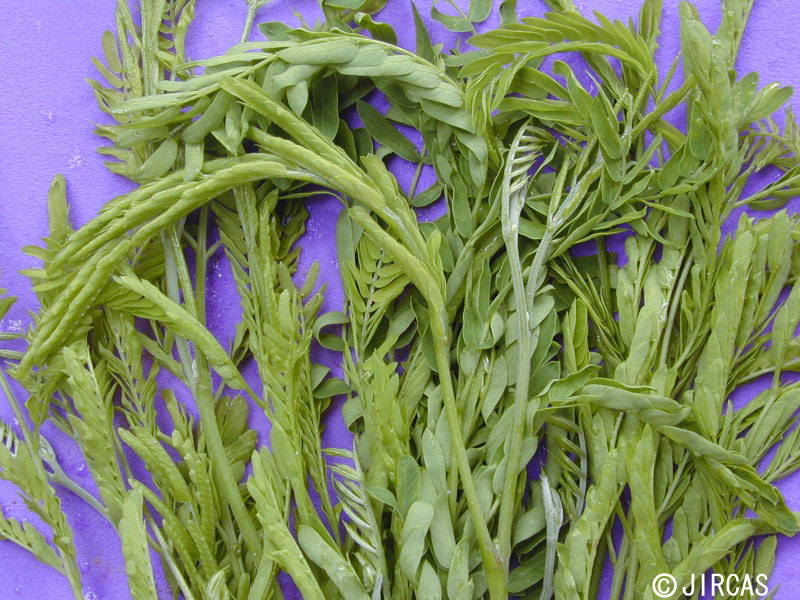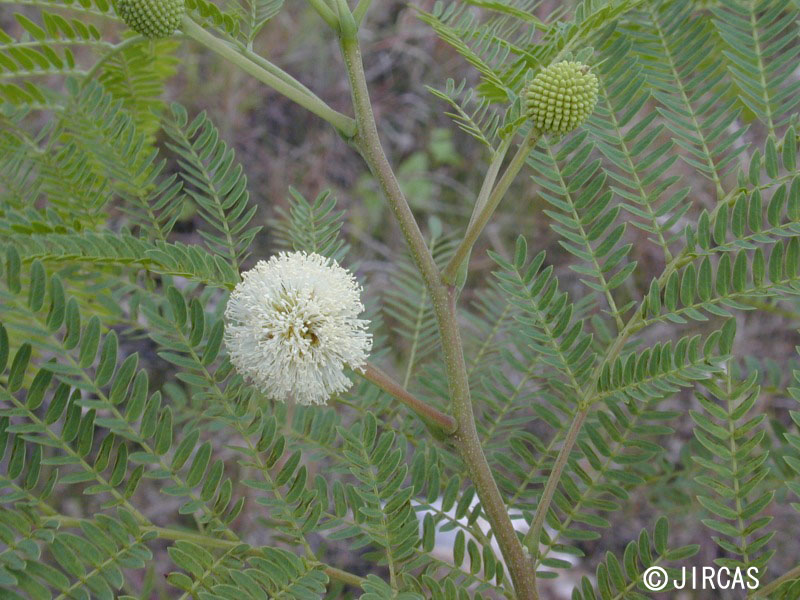Leucaena leucocephala Lamk. (Fabaceae)
- Scientific name
- Leucaena leucocephala Lamk.
- Family name
- Fabaceae (Syn. Leguminosae)
- Common name
- Ipil-ipil (English); ginnemu (Japanese)
- Local name
- Kratin thai
Shrub or small tree, up to 10 m tall. Leaves alternate, bipinnate, rachis 15–20 cm long; gland often present below junction of basal pair of pinnae, orbicular; pinnae 3–10 pairs, up to 10 cm long; leaflets 5–20 pairs, 6–21 × 1.5–5 mm, linear or linear-oblong; base slightly, obliquely cuneate, apex acute; both surfaces glabrous, margins ciliate, lower surface glaucous. Inflorescence with globose head; peduncles 1–3 together, 2–5 cm long. Calyx c. 2.5 mm long, tubular-campanulate, glabrous at base, puberulous at apex, teeth triangular, acute, puberulous. Petals c. 4.5–5 mm long, spathulate, puberulous. Stamens 10, filaments 8–10 mm long. Ovary hairy at apex, stipitate. Pod up to 2 × 20 cm, straight, flat, strap-shaped, dehiscent. Seeds 15–30, 6–9 × 3–4.5 mm, narrowly ovate, compressed, apex obtuse, base cuneate, c. 4 × 1.5 mm.
Commonly cultivated as a hedge plant; escapes as a weed in wastelands throughout Thailand. Propagated by direct seed sowing in rows, after soaking seeds in lukewarm water overnight to promote uniform germination.
Young shoots and young pods are eaten raw as side dishes with hot and spicy dishes, or in yum yod kratin kung sod salad.
Young shoots and young pods are eaten raw as side dishes with hot and spicy dishes, or in yum yod kratin kung sod salad.






